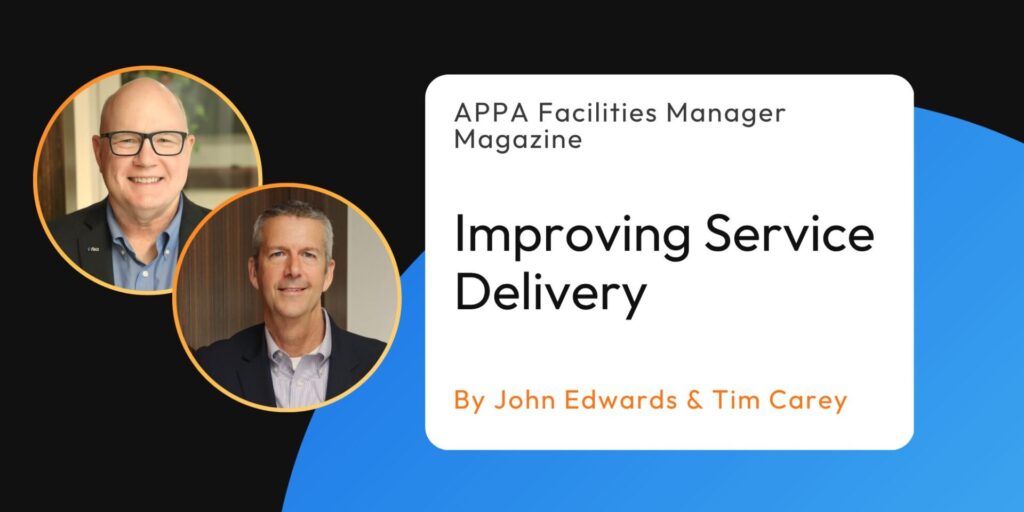Effective computerized maintenance management systems (CMMS) streamline maintenance data and support facility operations. It is an essential tool for facility managers to collect data related to facility performance, prioritize projects, and enable long-term capital planning. Poor planning can doom CMMS implementation.
Learn the top five reasons that lead to poor CMMS implementation.
An effective computerized maintenance management system streamlines maintenance data and facilities operations. It is an essential tool for facility managers to collect, analyze, and act on critical information related to facility performance, prioritize projects and enable long-term capital planning. However, improper implementation can doom CMMS implementation. The top five reasons a CMMS system is doomed to fail are below.
- Lack of a strategic facilities technology plan is perhaps the key reason these technologies fail, which means users operate on a “putting out the biggest fire first“ basis.
- Inadequate training worsens the situation, which means facility managers and executing personnel all “do their best“ to end up with lackluster results and disappointed stakeholders.
- Lack of data standards leads to inconsistencies in data entry, maintenance, and reporting, which means the data you put in can’t be used to create meaningful reports.
- Poor data input during implementation is the result, which means repeated efforts are required to accumulate accurate and complete data into the system before it can be trusted—assuming the trust isn’t irreconcilably broken after the first try!
- Inconsistent data maintenance leads to technology failure over the long run, which means your expensive technology solution keeps taking resources away from operations to produce out-of-date reports on the state of your facilities.
By addressing these potential pitfalls, facility managers help ensure their technology systems are successful in improving the performance and efficiency of their facilities, which more time receiving the praise of your stakeholders on your spectacular job keeping their buildings dry and at room temperature (HA—we can dream right?!)
Facility management (FM) technologies are an invaluable tool for managing a facility. But they all-too-often fail to deliver desired results. According to the International Facility Management Association (IFMA), there are several reasons why facility management technologies fail. In this article, we’ll explore the top five reasons and discuss what you can do about it.
- FM technologies fail because facility owners, executives, FMs, or maintenance staff do not have (or fail to adhere to) a strategic technology plan. Without a clear plan, it’s difficult to clearly express what is expected of a system before it is installed, configured, and implemented. This leads to the system not meeting the needs of either the facility or the users.
For example, if the goal of implementing an FM system is to improve energy efficiency, but the system is not designed to capture the necessary data, a lot of time and energy is wasted implementing a system that will never deliver the intended outcome. Without a strategic technology plan outlining the goals and objectives, it becomes extremely unlikely the system will meet the needs of the facility. Plans do not need to be excruciating endeavors, but they should be documented and accessible.
- FM technologies fail due to inadequate training. Inadequate training worsens the situation created by the lack of a plan. It can lead to data being incomplete, inaccurate, or both, simply because folks working with the tech don’t understand what is required of them. This happens far more than you might expect.
If the facility manager does not know how to use the system, then they may not be able to take full advantage of its capabilities. Similarly, if the executing personnel do not know how to use the system, then they may not be able to accurately enter data. Both cases lead to unreliable results.
Proper training helps ensure users understand how to effectively interact with the resources available to them. Without proper training, systems almost never live up to their full potential, which leads to poor organizational performance. In short: have a training plan. Clearly articulate the plan to those who will use it to familiarize themselves with the technology. Execute the plan.
- FM technologies fail without established data standards. Data standards refer to the establishment of a set of guidelines and rules for the input, organization, and maintenance of data in facility management technology systems. When data entry and maintenance are inconsistent, it leads to unreliable results and inaccurate performance measures.
For example, if the data is entered into the system in an inconsistent way, then the system may not be able to interpret the data properly. This can be as trivial as inconsistency of spelling or one group entering location information as a postal code and another group entering it as GPS coordinates. Or, if you really want to blow your mind, one group entering GPS information in decimal format and another entering it in degrees minutes seconds (DMS) format. This slight variation alone can cost countless hours in data cleanup and follow-on discussion and training—yes, you read that right. It has cost me literally days of cleaning up the mistake of “enter latitude like this, not that.” Yikes!
Data standards are important because they ensure data entered into a system is accurate, complete, and consistent. Without data standards, the data is unreliable. At best it leads to useless information. At worst, it leads to incorrect decisions being made about how to allocate your organization’s resources.
- FM technologies fail due to incorrect or insufficient data input during implementation. For example, if the system is designed to capture data on the energy consumption of the facility, but the data that is entered into the system is incorrect, then the system will produce unreliable results. Similarly, if the data that is entered into the system is insufficient, then the system may not be able to accurately project the desired reporting metrics.
Incorrect or insufficient data input is a problem because it can lead to unreliable results. Without accurate data, it is impossible to make informed decisions based on the data. Therefore, it is important to ensure that the data that is entered into the system is accurate and complete.
- FM technologies fail because information is not continually updated. If the system is designed to capture data on the maintenance needs of the facility, but the data is not updated regularly, then the system may not accurately reflect the current state of the facility. This can lead to maintenance issues being overlooked or neglected, which can ultimately lead to system failure.
Regularly updating information is important because it ensures the data in the system is accurate and up-to-date. Without regular updates, the data in the system may become outdated, which can lead to poor performance. Again, having a plan for this from the outset of implementation makes a world of difference in how well the technology performs its intended task.
FM technologies are a powerful tool. However, if you make these mistakes, they can create major headaches and costs to your organization. And worse yet, it can just make you look bad. So have a strategic technology plan, plan adequate training, create and monitor data standards, ensure data input is accurate and complete, and keep your data updated at your pre-determined interval.




